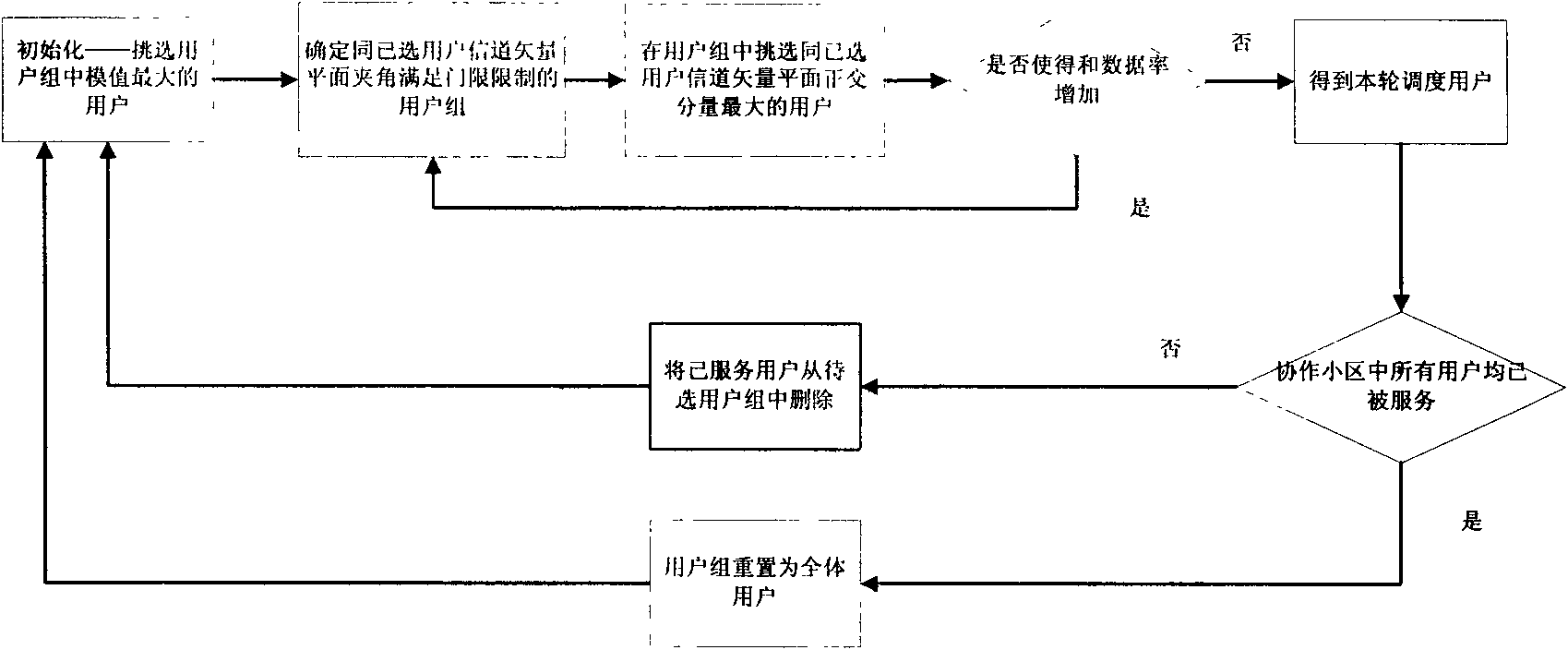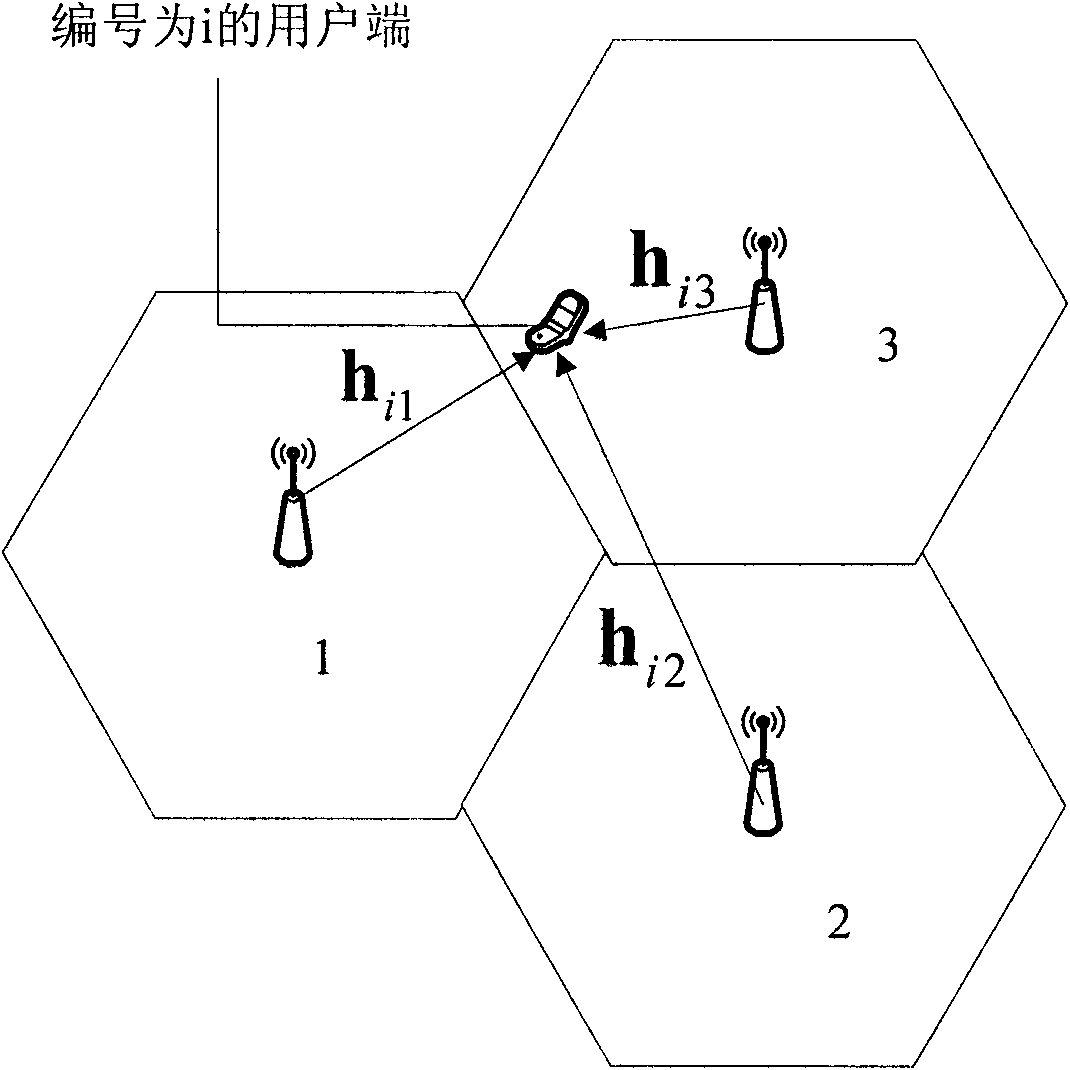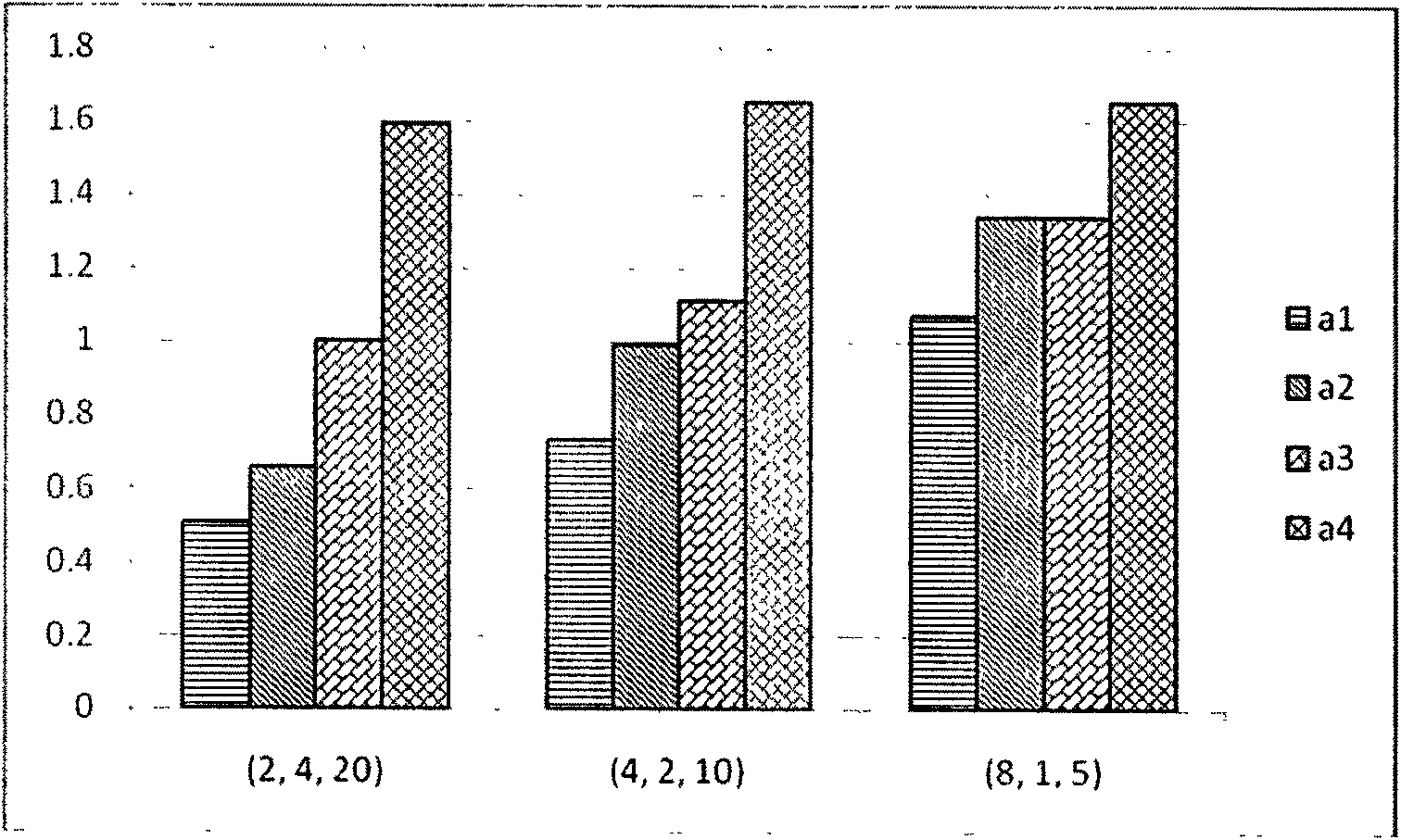Low-feedback multi-user scheduling method in cooperative multicast MIMO transmission
A multi-user scheduling and user scheduling technology, which is applied in transmission path sub-channel allocation, diversity/multi-antenna system, space transmit diversity, etc., can solve the problem of reducing the uplink feedback overhead
- Summary
- Abstract
- Description
- Claims
- Application Information
AI Technical Summary
Problems solved by technology
Method used
Image
Examples
Embodiment Construction
[0098] The present invention proposes a low-feedback user scheduling method in coordinated multi-point transmission. Its basic idea is to consider the asymmetric characteristics of the CoMP system channel in the scenario where the cooperative base station adopts ZF-BF to realize downlink cooperative multi-user MIMO transmission, that is, The average channel energy from different cooperative base stations to the same user is different. Based on the theoretical analysis of the orthogonal projection modulus and angle upper bound of the space formed by the channel vector of each candidate user to the channel vector of the selected user, we propose two A scheduling scheme based on statistical modulus and based on all channels of the cell and channel modulus of other cooperative cells.
[0099] In order to make the purpose, technical solution and advantages of the present invention clearer, the present invention will be further described in detail below in conjunction with the accomp...
PUM
 Login to View More
Login to View More Abstract
Description
Claims
Application Information
 Login to View More
Login to View More - R&D
- Intellectual Property
- Life Sciences
- Materials
- Tech Scout
- Unparalleled Data Quality
- Higher Quality Content
- 60% Fewer Hallucinations
Browse by: Latest US Patents, China's latest patents, Technical Efficacy Thesaurus, Application Domain, Technology Topic, Popular Technical Reports.
© 2025 PatSnap. All rights reserved.Legal|Privacy policy|Modern Slavery Act Transparency Statement|Sitemap|About US| Contact US: help@patsnap.com



